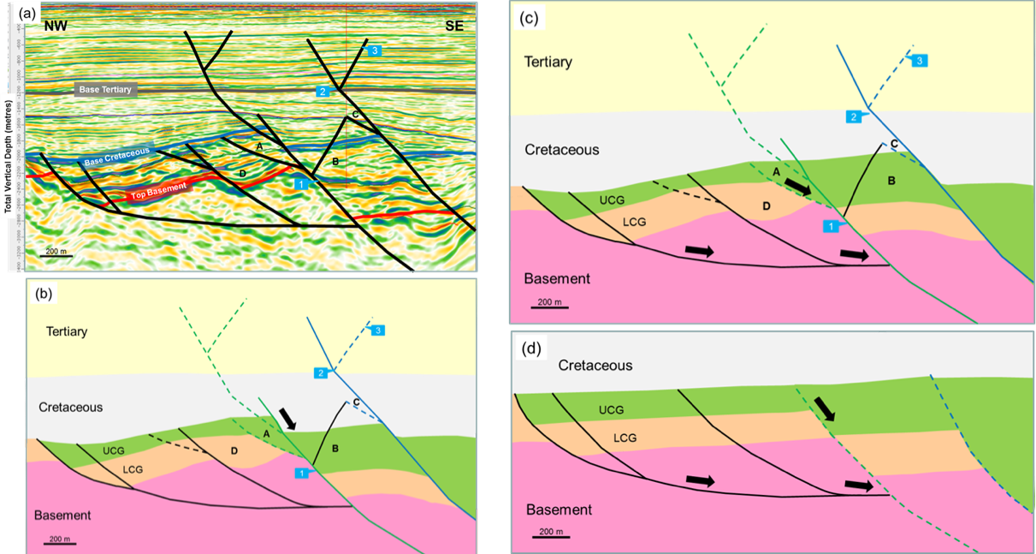Low Angle Faults
Low angle normal faults are not predicted by Anderson (1951) - normal faults should form at about 60 degrees where there is a favourable balance of normal and shear stresses involved in their formation. However, they do exist in geology, and can be explained by (i) pre-existing anisotropies e.g., a weak salt layer, (ii) high pore pressure and (iii) fault block rotation. Here we focus upon fault block rotation.
Rona Ridge, West of Shetland
Block rotation has been demonstrated to explain the occurrence of low angle faults on a structural high known as the Rona Ridge [1], which lies about 70 km West of the Shetland Isles, UK. A seismic section across the Clair Ridge development area is shown on Fig. 1. Interpretation of (a) is given in (b). The faults from Base Cretaceous are linked downwards into a basement detachment (listric) fault.
Figure 1. Seismic section across the Clair Field (Ridge section), (a) not interpreted, (b) interpreted. From Ogilvie et al (2015).
A fault block rotation model (Fig. 2, 3) has been proposed [1] to explain the structural styles observed in Fig 1.
(a) Devonian sediments (brown to red) have been deposited during rifting (L. Dev)
(b) During the E Cretaceous, further extension (rifting) along the listric fault has produced a block rotation curvature at top reservoir. It has shallowed existing faults to mechanically unfavourable angles for further movement. New faults form at favourable angles (> 60 deg).
(c) Block drop down along new fault. Note how the triangular slice now in the footwall of the new fault used to be in the hanging wall of the old fault.
Note that there has been reactivation of some of these faults into the Upper Cret/Tertiary sections (Fig 1).
Figure 2. Fault Block Rotation model for the Rona Ridge - see text for explanation.
Figure 3. Stages (from d - b) of fault block rotation in the Clair Field with seismic interpretation (a). From Ogilvie et al. (2015).
Clair Field Fractures - predictability
The Clair Field is a fractured reservoir, with wells either relying upon fractures or fractures providing a permeability assist. These are generally below seismic (Fig 1) resolution but in many cases will form a damage zone around seismically resolvable faults. So, fractures that will form around the fault in Fig 2a will have become rotated with fault rotation and new fractures will form around the more recent sections. Many of these will have been reactivated by younger events e.g., Tertiary uplift and new fractures will form.




